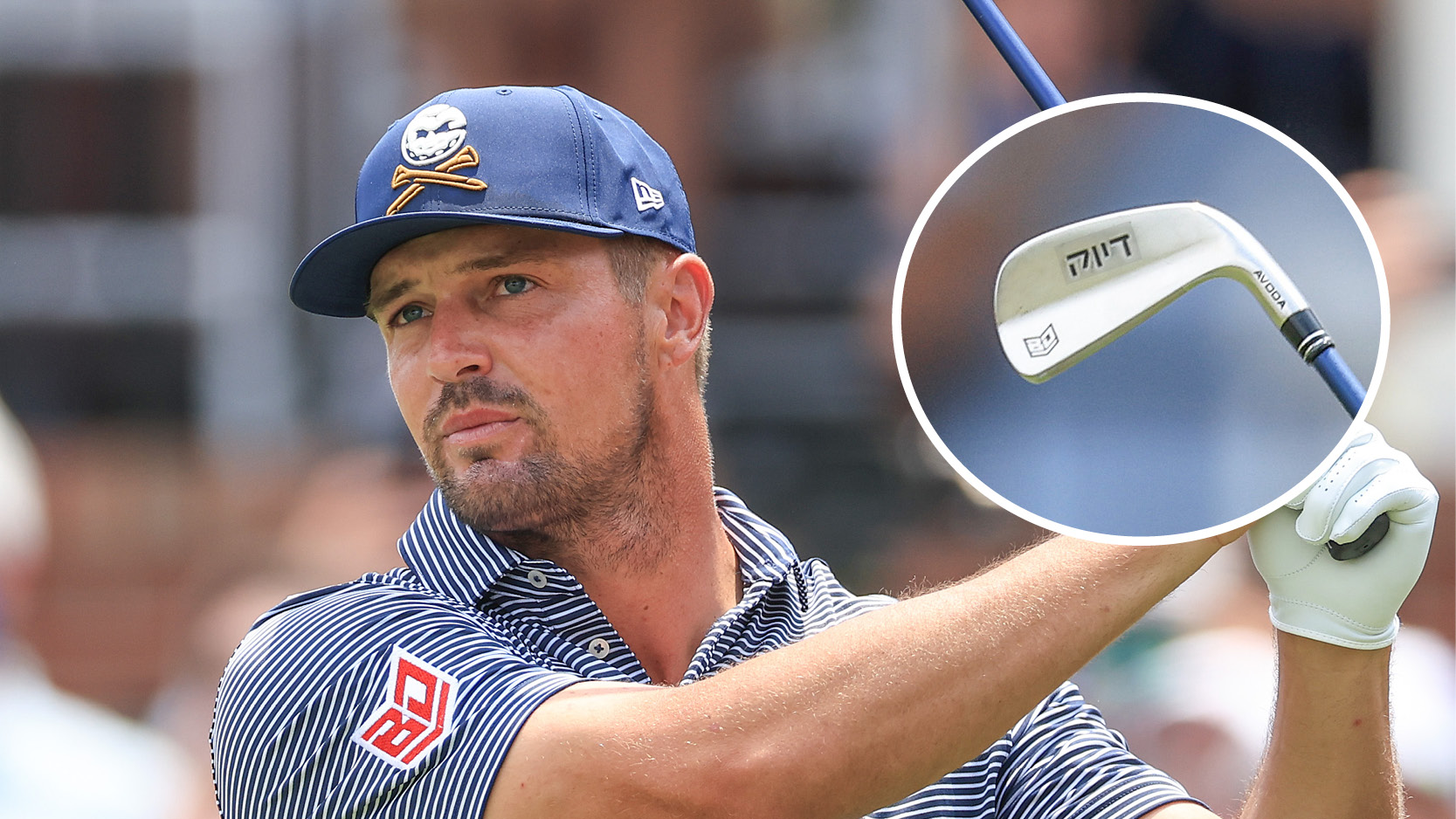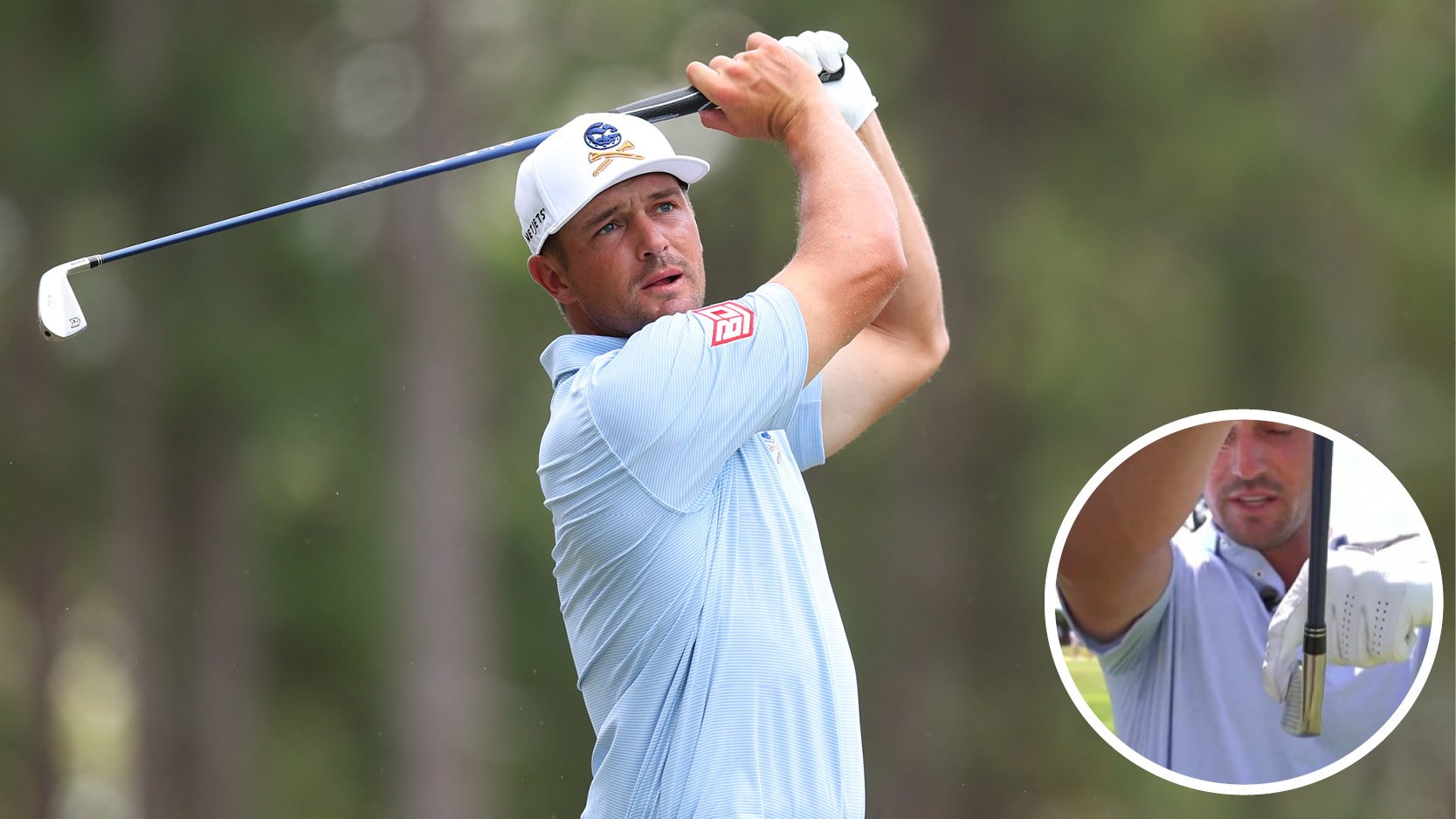
They've been the talk of the Majors this year, and now Bryson DeChambeau says that his unique clubs will soon be available for consumers to buy for themselves.
DeChambeau has had his Krank Formula Fire LD Driver in play since last year, using it for his incredible 58 at LIV Golf Greenbrier.
He then added his unique 3D-printed irons at The Masters which he helped develop himself working alongside Avoda Golf - and they've been raising eyebrows ever since.
With his equipment set-up then helping him to that thrilling US Open victory at Pinehurst No.2, there's even more interest in the golf scientist's latest creations - and he says he's aiming to bring them to market.
"They're one of one right now, and we're working on building a set for the mass consumers, but it takes a little bit of time to get everything in production in the right way," DeChambeau said at LIV Golf Nashville.
"You're going to see some pretty interesting stuff coming out here soon within the next month with a driver that could be pretty unique for the market, and it'll help a lot of golfers out."
DeChambeau had a few issues with his driver at Pinehurst, when he changed heads just before his final round on Sunday - consequently admitting that was a mistake as he continually missed fairways as a result.
But he's had plenty of success with his Krank driver, which for him has six degrees of loft and a LA Golf BAD Prototype shaft that measures around the 45-inches mark.
Krank made their name in the World Long Drive ranks, securing multiple championships along the way, but although DeChambeau's driver is designed for those who have a ball speed of over 175 mph, he's now looking to bring a version out for all golfers.

It's DeChambeau's new irons that have the real innovation in them though, with the 'face bulging' of the club not new in the golfing world and is featured on all the best drivers and fairway woods but hasn't been seen before when it comes to irons.
The new irons are 3D printed in order to create the required bulge shape and were only approved by the USGA just days before The Masters, so DeChambeau debuted them at Augusta National where he finished T6.
DeChambeau explained the theory behind the new irons ahead of the US Open when speaking to Golf Channel's Johnson Wagner during a practice round.
"Essentially, the ball doesn't roll (down the face), it rolls this way (across the face). If you see the curvature of the face, it's kind of like a driver or hybrid," said DeChambeau.
Bryson DeChambeau shows off his custom five iron as he prepares to take on Pinehurst No. 2. 👀 #USOpen pic.twitter.com/ydDrpZXjGSJune 11, 2024
"It does cave in on the heel and on the toe as well, which creates that curvature. So, for the speeds that I have, when I hit it on the toe or heel it doesn't overcorrect. Most people think that irons... the MOI there doesn't affect the curvature, but it actually does at my speeds, the lower lofted, higher speeds.
"So, if I hit it on the toe I was hooking it like crazy and if I hit the heel I was missing it right like crazy. Now, by creating curvature on the toe and the heel, to get it started a little farther right on the toe and a little farther left on the heel, it makes sure it doesn't go too far offline".
With his second Major title in the bag, a huge increase in popularity on the course and in his online following, plus his unique style, when DeChambeau does bring these clubs to market it'll be one of the most eagerly-anticipated launches we've seen for some time.







